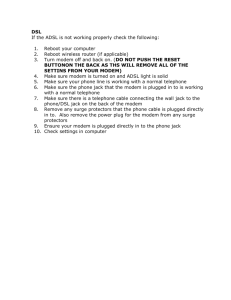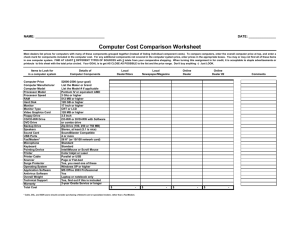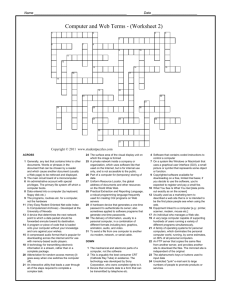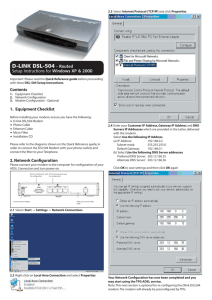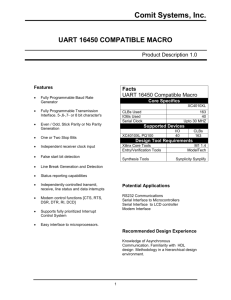Tutorial Supp. No.4
advertisement
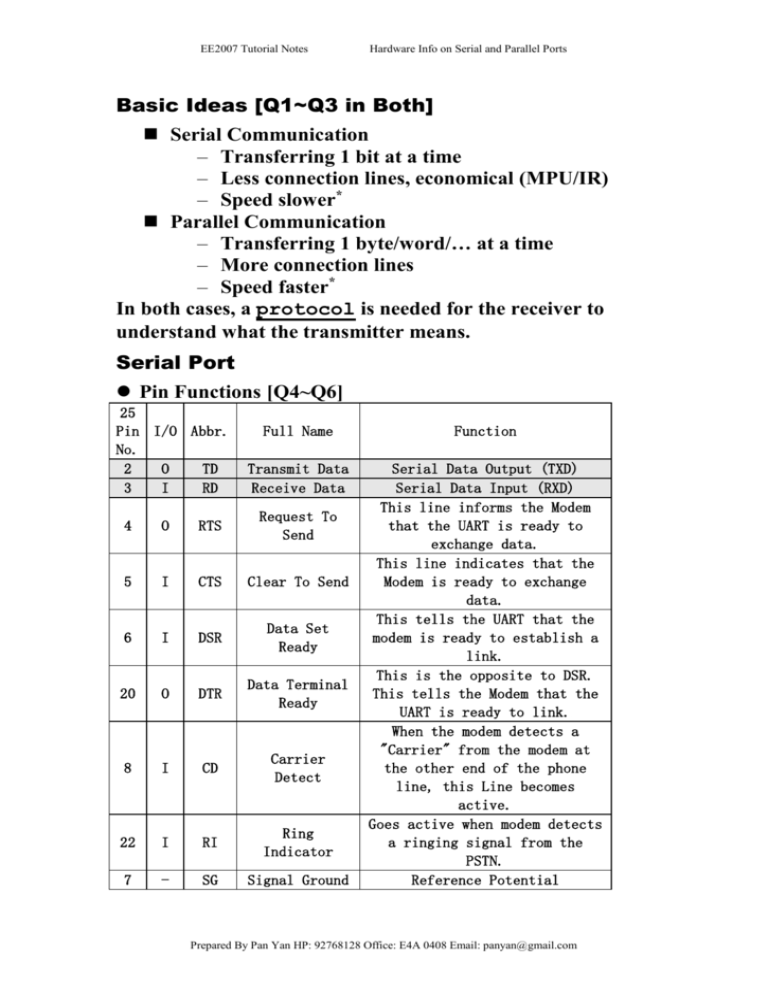
EE2007 Tutorial Notes Hardware Info on Serial and Parallel Ports Basic Ideas [Q1~Q3 in Both] Serial Communication – Transferring 1 bit at a time – Less connection lines, economical (MPU/IR) – Speed slower* Parallel Communication – Transferring 1 byte/word/… at a time – More connection lines – Speed faster* In both cases, a protocol is needed for the receiver to understand what the transmitter means. Serial Port Pin Functions [Q4~Q6] 25 Pin I/O Abbr. No. 2 O TD 3 I RD Full Name Function Transmit Data Receive Data Serial Data Output (TXD) Serial Data Input (RXD) This line informs the Modem that the UART is ready to exchange data. This line indicates that the Modem is ready to exchange data. This tells the UART that the modem is ready to establish a link. This is the opposite to DSR. This tells the Modem that the UART is ready to link. When the modem detects a "Carrier" from the modem at the other end of the phone line, this Line becomes active. Goes active when modem detects a ringing signal from the PSTN. Reference Potential 4 O RTS Request To Send 5 I CTS Clear To Send 6 I DSR Data Set Ready 20 O DTR Data Terminal Ready 8 I CD Carrier Detect 22 I RI Ring Indicator 7 - SG Signal Ground Prepared By Pan Yan HP: 92768128 Office: E4A 0408 Email: panyan@gmail.com EE2007 Tutorial Notes Hardware Info on Serial and Parallel Ports NULL MODEM H/W Handshaking When the computer wishes to send data it takes active the RTS line. If the modem has room for this data, then the modem will reply by taking active the CTS line and the computer starts sending data. If the modem does not have the room then it will not send CTS. S/W Handshaking The modem will only have a small buffer so when the computer fills it up the modem sends a Xoff character to tell the computer to stop sending data. Once the modem has room for more data it then sends a Xon character and the computer sends more data. Role Of UART [Q7~Q11] Prepared By Pan Yan HP: 92768128 Office: E4A 0408 Email: panyan@gmail.com EE2007 Tutorial Notes Hardware Info on Serial and Parallel Ports Serialize data to be transferred. Parallelize data received Add/Remove control bits Handshaking Baud Rate Control Connected to uP by BUS Accessed by I/O instructions Port Numbers RS232 [Q12~Q13] Voltage Definition Bit Frame Definition Parity Bit checks if error occurs in the data transmitted. (Not Perfect) The Start / Stop bit-pair defines a definite length frame for error detection. When a “space” is detected at a Stop bit location, frame error is generated. (Suppose a random waveform) Prepared By Pan Yan HP: 92768128 Office: E4A 0408 Email: panyan@gmail.com EE2007 Tutorial Notes Hardware Info on Serial and Parallel Ports Parallel Port Pin Functions [Q5 & Q6] Control lines are used as interface control and handshaking signals from the PC to the printer. Status lines are used for handshake signals and as status indicators for such things as paper empty, busy indication and interface or peripheral errors. Data lines are used to provide data from the PC to the printer, in that direction only. Five Modes [Q4] Forward direction only Compatibility Mode "Centronics" or standard mode Reverse direction only Nibble Mode 4 bits at a time using status lines for data. Hewlett Packard Bi-tronics Byte Mode 8 bits at a time using data lines Bi-directional EPP Enhanced Parallel Port- used primarily by non-printer peripherals, CD ROM, tape, hard drive, network adapters, etc.... ECP Extended Capability Port- used primarily by new generation of printers and scanners Prepared By Pan Yan HP: 92768128 Office: E4A 0408 Email: panyan@gmail.com EE2007 Tutorial Notes Hardware Info on Serial and Parallel Ports Standard Mode Handshaking [Q9] Compatibility Mode phase transitions: 1. Write the data to the data register 2. Program reads the status register to check that the printer is not BUSY 3. If not BUSY, then Write to the Control Register to assert the STROBE line 4. Write to the Control register to de-assert the STROBE line Electrical Property [Q10] The output of the Parallel Port is normally TTL logic levels (0V & 5V). Therefore the serial port can have a maximum swing of 50V compared to the parallel port which has a maximum swing of 5 Volts. Therefore cable loss is not going to be as much of a problem for serial cables than they are for parallel. Prepared By Pan Yan HP: 92768128 Office: E4A 0408 Email: panyan@gmail.com

